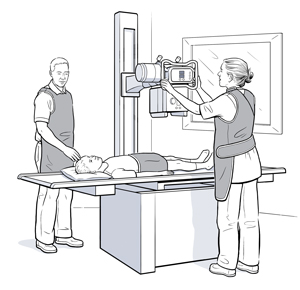Evaluation Procedures for Children
What are standard evaluation procedures?
Before your child’s healthcare provider can recommend treatment or rehabilitation, he or she must first find out the reason for, and source of, your child's condition. This typically means doing a full physical exam and taking a detailed health history. Tell your child's provider about any other illnesses, injuries, or complaints that have been linked to the pain or condition. Also tell the provider about any past treatments or medicines prescribed. Some early tests may then be done, including:

Advanced evaluation procedures
Children who need further evaluation may have 1 or more of the following:
-
MRI. A diagnostic procedure that uses a combination of large magnets, radiofrequencies, and a computer to produce detailed images of organs and structures within the body.
-
CT scan. A diagnostic imaging procedure that uses a combination of X-rays and computer technology to produce horizontal, or axial, images (often called slices) of the body. A CT scan shows detailed images of any part of the body, including the bones, muscles, fat, and organs. CT scans are more detailed than general X-rays.
-
EMG (electromyogram). A test used to evaluate nerve and muscle function.
-
Bone scan. A nuclear imaging method to evaluate any degenerative or arthritic changes in the joints. It can also detect bone diseases and tumors, and determine the cause of bone inflammation.
-
Ultrasound. This is becoming a common test for evaluating musculoskeletal complaints. It uses sound waves to form images of the body.
After reviewing the test results, your child's orthopedist will discuss all treatment options with you. The doctor will help you select the best treatment plan to help your child live an active and functional life.
Online Medical Reviewer:
Goode, Paula, RN, BSN, MSN
Online Medical Reviewer:
Joseph, Thomas N., MD
Date Last Reviewed:
2/1/2023
© 2000-2024 The StayWell Company, LLC. All rights reserved. This information is not intended as a substitute for professional medical care. Always follow your healthcare professional's instructions.